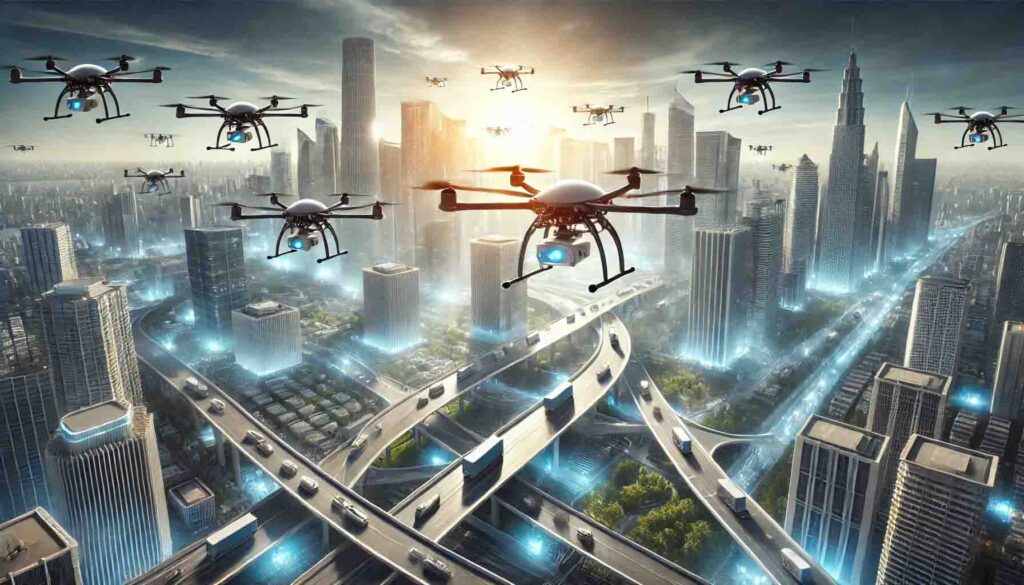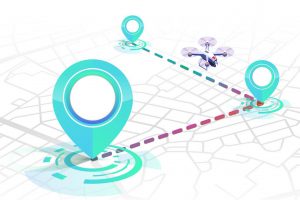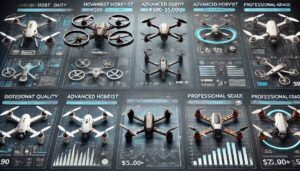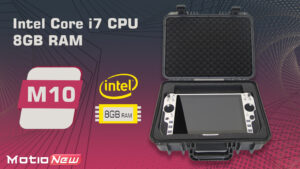Imagine a city where your food delivery arrives not by a scooter but by a sleek drone that lands effortlessly on your balcony. A world where emergency medical supplies zip through traffic-choked streets from above, reaching their destination in minutes. This vision of Urban Air Mobility (UAM) isn’t just a futuristic dream—it’s rapidly becoming a reality. And at the heart of this transformation are multirotor drones.
Multirotor drones, with their unique ability to take off and land vertically, hover in place, and navigate through tight urban spaces, are perfectly suited to meet the challenges of UAM. Let’s explore why these drones are revolutionizing urban transportation and why they’re the backbone of this exciting new era.

What Is Urban Air Mobility?
Urban Air Mobility refers to the use of airspace in cities to move people and goods efficiently, leveraging advanced technologies like drones and electric vertical takeoff and landing (eVTOL) aircraft. The goal is to reduce congestion, improve accessibility, and create a sustainable transportation ecosystem.
While UAM includes larger vehicles for passenger transport, multirotor drones are leading the charge in practical, scalable applications like package delivery, infrastructure inspection, and emergency response.
What Makes Multirotor Drones Perfect for UAM?
Multirotor drones are a specific type of drone that uses multiple rotors (propellers) to generate lift and thrust. Here’s why they’re a perfect fit for UAM:
Vertical Takeoff and Landing (VTOL)
In urban areas, space is at a premium. Multirotor drones can take off and land vertically, requiring no runways or large open areas. This makes them ideal for navigating tight spaces like rooftops, courtyards, or designated drone zones.
Hovering Capability
Multirotor drones can hover in place, making them perfect for applications like inspections, surveillance, or precise deliveries.
Maneuverability
With advanced flight controls, these drones can navigate through crowded urban environments, avoiding obstacles like buildings, power lines, and trees.
Scalability
Multirotor drones come in various sizes, from small delivery drones to larger models capable of carrying medical supplies or conducting industrial inspections.
Sustainability
Most multirotor drones are electric, making them a greener alternative to traditional delivery vehicles, reducing both carbon emissions and noise pollution.
Key Applications of Multirotor Drones in UAM
Multirotor drones are already proving their worth in several critical areas of urban air mobility. Let’s dive into some of their most impactful applications.
Package Delivery
Imagine receiving your online order within 30 minutes, straight to your doorstep—no traffic delays, no human error.
Companies like Amazon, UPS, and DHL are already testing drone delivery systems that promise faster, cheaper, and more sustainable last-mile logistics. Multirotor drones excel in this space because they can:
Fly directly to the delivery point, avoiding traffic.
Navigate urban areas with precision.
Deliver lightweight packages efficiently.
Example: In remote or disaster-stricken areas, multirotor drones can deliver medical supplies, food, or water where traditional delivery systems fail.
Emergency Response
In an emergency, every second counts. Multirotor drones are stepping in to save lives.
These drones are increasingly used for tasks like delivering defibrillators to cardiac arrest victims, transporting blood or organs, and aiding in search-and-rescue missions. Their speed and ability to bypass obstacles make them a critical tool for first responders.
Example: Drones equipped with defibrillators can reach cardiac arrest victims four times faster than ambulances.
Infrastructure Inspection
Urban environments are packed with infrastructure that needs regular maintenance, from bridges to skyscrapers.
Multirotor drones simplify inspection tasks by providing a safe and efficient way to access hard-to-reach areas. Equipped with cameras, lidar, or thermal sensors, these drones can:
Inspect infrastructure for cracks, corrosion, or wear.
Monitor power lines, cell towers, and pipelines.
Reduce the need for human workers to perform dangerous tasks.
Example: Drones can inspect a skyscraper in hours, a task that would take days or weeks with traditional methods.
Traffic Monitoring and Management
Multirotor drones are the eyes in the sky, keeping cities running smoothly.
These drones are used for real-time traffic monitoring, helping city planners and authorities identify bottlenecks, accidents, or construction delays. By analyzing drone data, cities can optimize traffic flow and reduce congestion.
Example: Drones can monitor rush-hour traffic patterns, providing data for AI-driven traffic light systems.
Smart City Services
Multirotor drones are becoming an integral part of smart cities, integrating with IoT networks and AI systems.
From monitoring air quality to delivering groceries, these drones are helping cities become more efficient and sustainable. In smart cities, drones can:
Deliver public services more efficiently.
Monitor pollution levels and provide actionable data.
Support law enforcement with surveillance and crowd monitoring.
Example: In Dubai, drones are used for aerial surveillance and monitoring of citywide events.
Challenges Facing Multirotor Drones in UAM
While multirotor drones have tremendous potential, they also face several challenges:
Regulation: Airspace regulations are still catching up with the rapid growth of drone technology.
Battery Life: Limited flight times restrict the range and duration of missions.
Traffic Management: Coordinating thousands of drones in urban airspace requires robust traffic management systems.
Public Acceptance: Privacy and noise concerns may hinder widespread adoption.
Despite these hurdles, advancements in technology and policy are steadily paving the way for a drone-powered urban future.
Overview Table: Why Multirotor Drones Are the Backbone of UAM
Feature | Benefit | Example Use Case |
VTOL Capability | Allows operation in tight urban spaces without runways. | Delivering packages to rooftop drone pads. |
Hovering | Enables precise deliveries and detailed inspections. | Delivering medicine to a high-rise balcony. |
Maneuverability | Navigates crowded areas and avoids obstacles. | Flying through urban streets to deliver food. |
Scalability | Supports various applications, from small deliveries to surveys. | Inspecting bridges or delivering emergency medical supplies. |
Sustainability | Reduces carbon emissions and noise pollution. | Replacing fossil-fuel-powered delivery vehicles in urban areas. |
Emergency Response | Speeds up critical deliveries in life-saving situations. | Delivering defibrillators faster than ambulances. |
Smart City Integration | Enhances city efficiency through data collection and delivery. | Monitoring traffic and air quality in real time. |
Let’s Hear From You!
Multirotor drones are transforming the way we think about urban mobility, but this is just the beginning. What do you think about drones as part of our daily urban lives? Are you excited about drone deliveries, or do you have concerns about noise or privacy? Maybe you’ve even experienced drone tech in action!
Share your thoughts, questions, or experiences in the comments below. Let’s discuss how drones are shaping the future of our cities!




